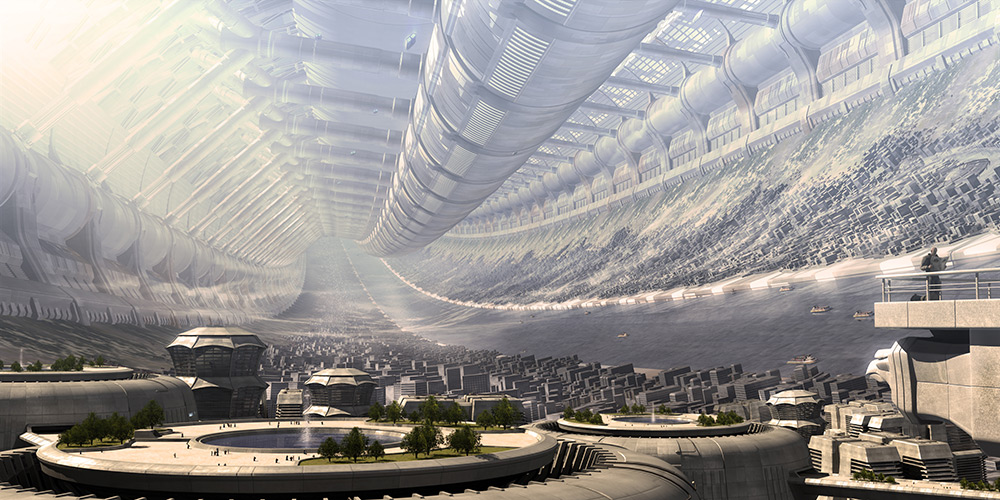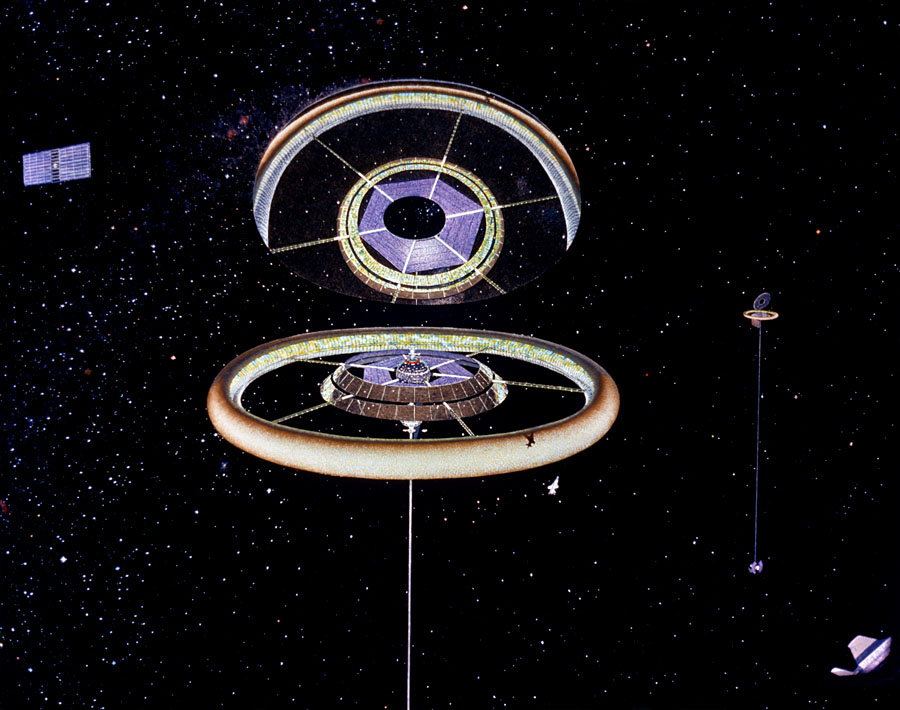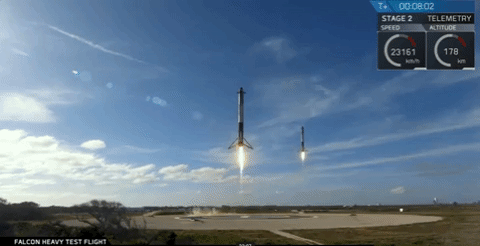Stanford Torus
Introduction
“Abalakin” is a large torus depicted by artist Alexander Preuss, winner of the 2008 NSS Space Settlement Calendar Art Contest. © Alexander Preuss.
Technology is rapidly increasing over the past decade. These help in exploring beyond our universe. And what if we build a habitable place in space. There are many concepts are proposed to make the space habitable. In this, you will know about the Stanford torus which would be about 60 times smaller than the O Neil cylinder and it’s much much smaller than the Dyson sphere in size.
In 1975 Stanford University proposed a design for space natural surroundings called Stanford Torus in which 10,000 to 140,000 can live.
In the near future, someday we wanna take humanity into space. So to make this concept real; all we need is to take one solar power station, 10 thousand people, and 10 million tons of crumbled moon rock, and you get a space habitat a Stanford torus.
How do we build it?
To build a Stanford torus we’d need to mine the moon a little. The moon is the perfect mining place because it contains oxygen in its rock that we could use to make a breathable atmosphere and produce water. For constructing the windows and solar cells we’d use the silica present there. It also has aluminum that would work perfectly for construction. But of course, this is just the beginning.
Relative concentration of various elements on the lunar surface (in weight %) Hateras, CC BY-SA 3.0, via Wikimedia Commons
We’d start assembling the habitat in space, between the moon and the earth. For easier transportation of the material, we’d place it close enough to the moon. It would also need to far enough from the earth that it wouldn’t fall into our planet’s orbit.
The structure of Our Stanford torus would look similar to the bicycle wheel and the spokes would join together at the center. The inhabitants would live in the tire section. But before we bring people in we need to create a proper environment and life support. For the gravity similar to the earth we’d make the structure complete a full spin on its axis every minute. The centrifugal force would make up for the weightlessness you normally experience in space because you don’t want the things to float around.
How to energize it?
The habitat would get all its sunlight beamed down by a large mirror stationed directly over a 45-degree angle. It would direct solar rays into the smaller mirrors on the outer shell of the torus. Those mirrors would also act as part of the shield from all the harmful cosmic radiation.
The overhead mirror brings sunlight into the colony through a series of louvred mirrors on the inner ring. Painting by Don Davis courtesy of NASA
It is estimated that about 3kW per person of electrical energy is required as the report given by the Stanford torus team. With an estimate of 1390 W per square meter of solar energy available in space and a 10% efficient solar cell, about 215,827 m2 of minimum area of the solar panel is required.
To know more in detail - Powering the Stanford Torus
How does this habitat look like and who will be allowed to live?
It will have only labs, high-tech farms, and housing. It will be like living in a small town. Who will be allowed there? At first, there will be mostly scientists or engineers, farmers, or space construction workers. They’d take up permanent resident on the torus with their families, where they would live a sustainable colony life.
Whoever goes there each one of them is strictly selected through extensive tests and training. But we wouldn’t just build the habitat for the sake of it. The Stanford torus would benefit the deep space research and act as a maintenance and construction point for satellite solar power stations. The solar power stations would provide for all the colony’s energy needs and would have the potential to supply the energy to the earth as well. We’d beam solar energy down with lasers or microwave emitters then we would collect the energy above the earth’s atmosphere.
Outro
But all that wouldn’t be cheap. The cost of the Stanford torus would come to about $900 billion. Thanks to the reusable SpaceX rockets which will minimize a large chunk of that cost to send people to space. Eventually, we’d start building more habitats and explore more of the solar system.
Falcon Heavy landing Credit: SpaceX




